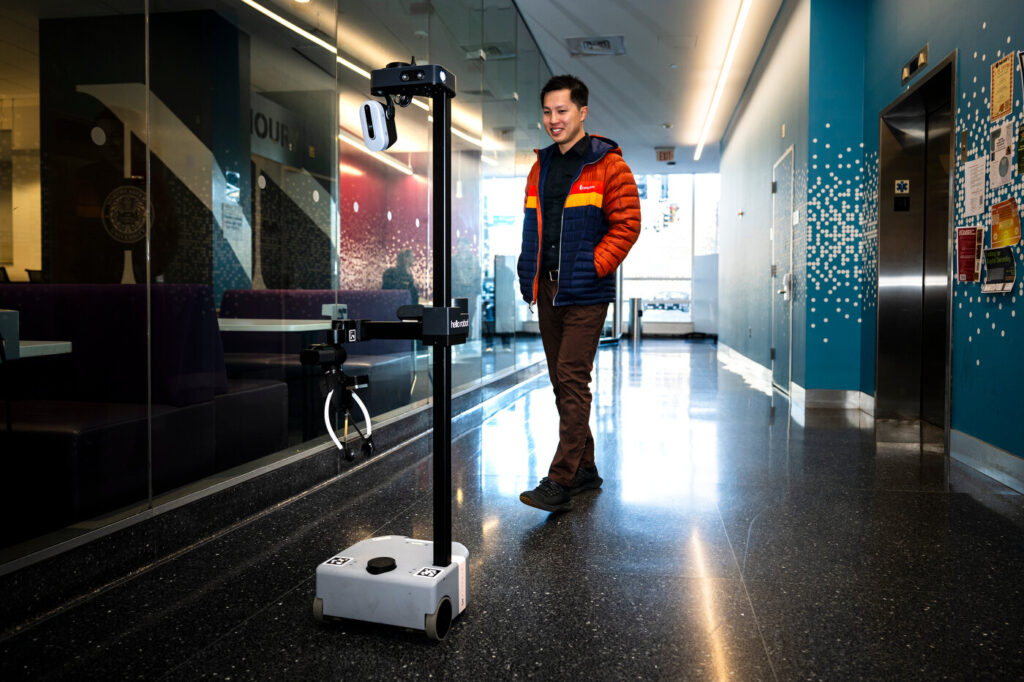At Northeastern University’s bustling Boston campus, a unique experiment in human-robot interaction is unfolding, spearheaded by computer science professor Zhi Tan. The heart of this initiative is “Marlo,” a helper robot navigating the complex environment of the West Village H residential building—a blend of classrooms and study spaces conducive to cultivating innovative learning and research.
Marlo, short for the Hello Stretch 3 robot model equipped with a camera sensor and a grip arm, is the brainchild of students and faculty at the Khoury College of Computer Sciences, where Zhi Tan’s lab is deeply invested in developing robotic assistants. Despite Marlo’s early challenges, such as navigating a building with speedy elevators, the robot demonstrates the potential for significant progress in understanding and improving human-robot interactions.
Marlo’s task: to familiarize itself with the dynamic environment of West Village H. Embodying an AI-driven system, Marlo is learning to navigate common obstacles and guide people to key destinations like restrooms, cementing its role as a potential helper robot. While Marlo can currently tackle only these basic tasks, future capabilities may include complex functions like identifying available study spaces and taking on menial chores.
A central component of this project is integrating real-world data with Marlo’s programming. This practical exposure to an unpredictable environment offers invaluable insights for students like Althea Masetti Zanini, a third-year co-op in Tan’s lab, who emphasizes the necessity of field testing beyond theoretical development.
Tan’s research extends beyond campus, aspiring to engineer robots capable of assisting in caregiving roles, such as aiding hospital staff or the visually impaired and supporting elderly individuals to live independently. The campus initiative will soon branch into a “smart apartment” experiment to further explore these possibilities, evaluating how robots can offer help sensitively and efficiently.
Understanding human unpredictability remains a core challenge. Historical learning curves, like those faced by Roombas in home environments or driverless cars in unanticipated social settings, illustrate the necessity for extensive field data. Tan’s experience with Carnegie Mellon University’s autonomous vehicle program revealed critical insights about how robots learning via unexpected scenarios—like mistaking Furry convention attendees for oversized animals—benefit from real-world exposure.
Professor Tan’s pioneering efforts underscore the transformative power of integrating robotics into daily life, while the lessons learned from Marlo’s incremental journey highlight the complexities and potential of merging AI with human activities. As society continues to explore these technological horizons, Marlo’s development alongside Northeastern’s talented students provides a compelling window into the future of human-robot interaction.


